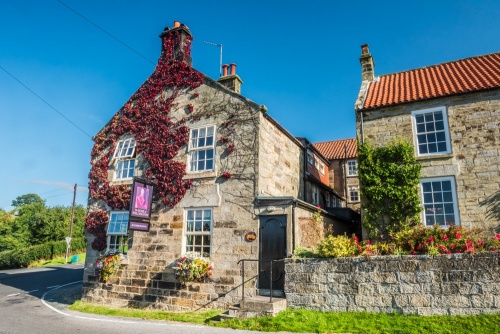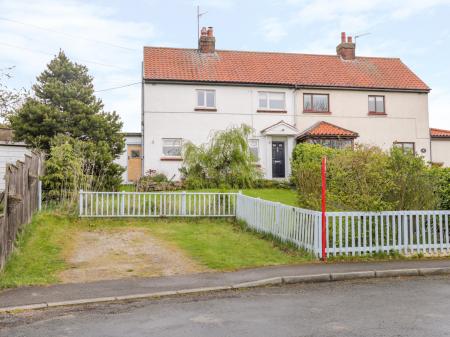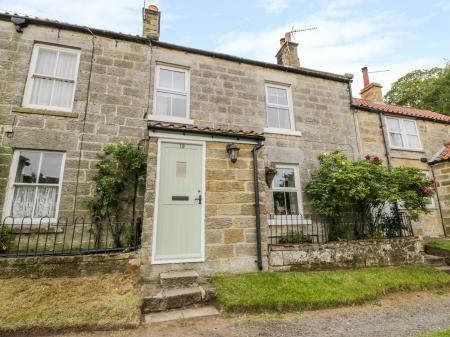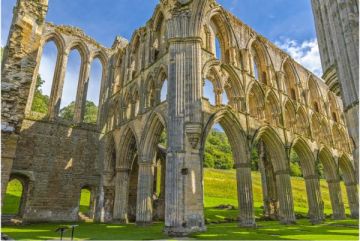
The Moors Centre is housed in an old shooting lodge that belonged to the Danby Estate, owned by the Dawnay family. The core of the building is a 17th century farmhouse, transformed in the 18th century into a lodge for the Dawneys and their guests to enjoy grouse shooting on the nearby moors.
A short distance away are the ruins of Danby Castle, once home to Catherine Parr, sixth and final wife to Henry VIII. At nearby Danby Beck is Stormy Hall, named, so legend tells us, after Henry VIII took refuge there during a storm while on his way to visit Catherine Parr at the castle.
The rectangular castle dates to the early 14th century and was built for Lord Latimer. In its day the design was remarkable, combining defence and a comfortable residence into one building. It is now incorporated into a large farmhouse.
The castle is usually closed to the public, but visits can sometimes be arranged through the Moors Centre. The Danby court leet meets here regularly to govern the use of common land in the area. The leet was originally a manorial court, deciding all manner of criminal cases.

The Moors Centre has a wealth of information on visiting the National Park, from maps to information pamphlets, you can find out about the natural history of the area, the best places to see birds, wildlife, and unusual plants. Learn about the local animals and plants that call the moors home, and find out more about the Danby estate and tourist attractions in the area.
There are regular workshops aimed at the younger generation, play areas, and interactive exhibitions. You can also enjoy a very pretty set of terraced gardens with great views of the moors, and take walks through nearby Crow Wood. Easy trails lead from Danby village onto the moors.
In the centre of Danby is the Duke of Wellington inn, which dates back to 1765. In the Napoleonic Wars, the inn was used as a recruiting station for soldiers. Look for the cast iron plaque with the likeness of the Duke, discovered during restoration work and now occupying pride of place over the fireplace in the bar.
A short distance outside the village is St Hilda's church, dating the Saxon period and retaining stonework from the Saxon, Norman, medieval, and Georgian periods. Closer to the village green is the Methodist Church, built in 1811. Beside the church is Victoria Jubilee School, built in 1887 to celebrate Queen Victoria's Jubilee.
Looming above the village is the hill of Danby Beacon, standing 229 metres high. In the 17th century a signal beacon stood atop the hill, to be lit at the first sign of an invasion fleet from France. The same hill later served as home to one of the first radar stations in England during WWII.
It is well worth venturing onto the slopes of Danby Beacon in August, when the heather is in bloom; the fields of brilliant purple heather are simply stunning, and the views over the surrounding countryside are breathtaking.

Visiting
I had the pleasure of staying in Danby at the Duke of Wellington inn for 3 days. I absolutely loved it. The location is simply wonderful. The village is incredibly picturesque and is full of historic buildings, none more so than the inn itself. A very short walk from the village brings you out onto the moors, where the scenery, especially when the heather is in bloom, is stunning.
It is well worth stopping atop Danby Beacon, just for the views, and if you can time your visits for sunset, you will be rewarded with a superb panoramic vista over the surrounding moorland countryside. Another highlight for me was the large number of standing stones scattered here and there amid the heather. Seemingly everywhere you look are more stones, evidence of just how long this area has been inhabited. And back in the village, keep an eye out for blackface sheep grazing peacefully on the village green!










 We've 'tagged' this attraction information to help you find related historic attractions and learn more about major time periods mentioned.
We've 'tagged' this attraction information to help you find related historic attractions and learn more about major time periods mentioned.



